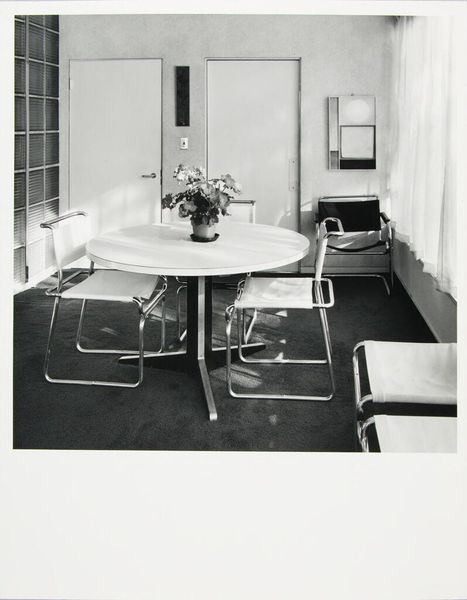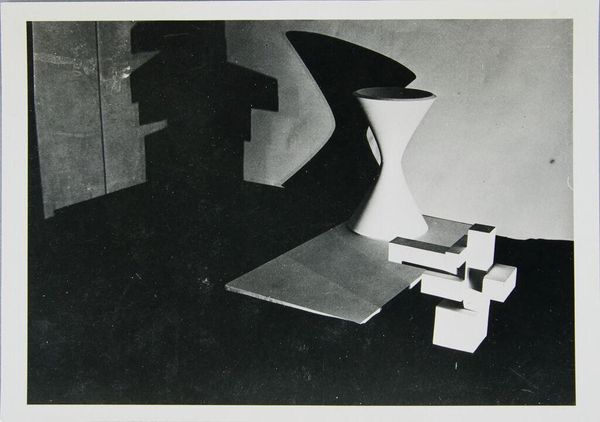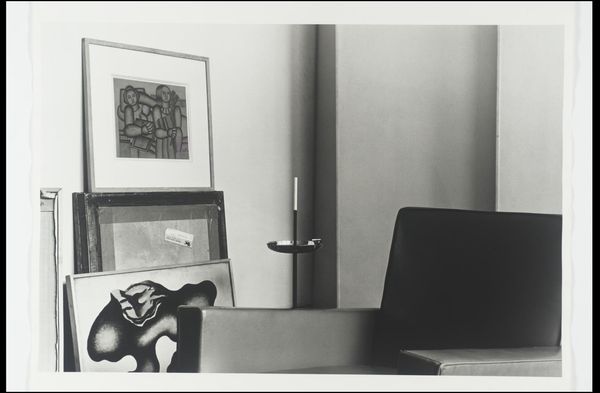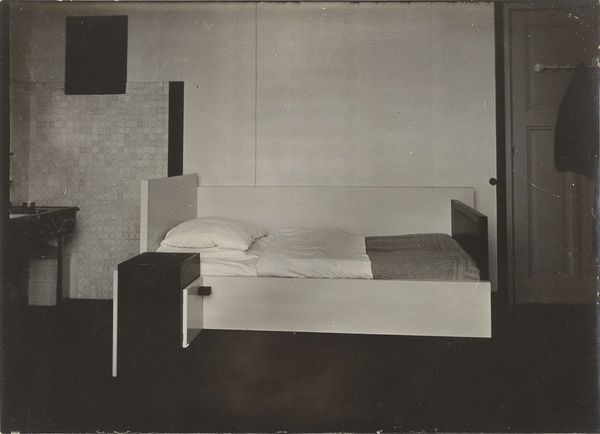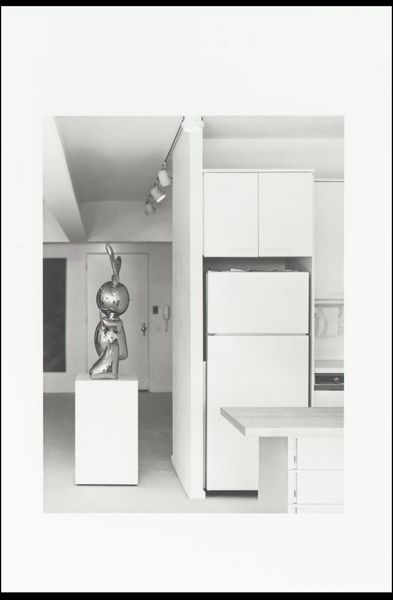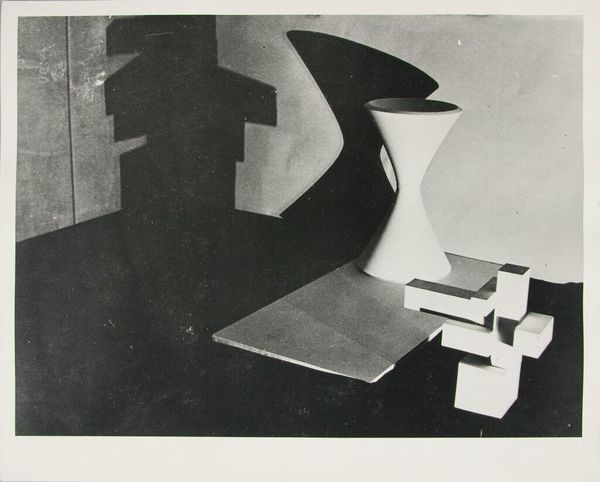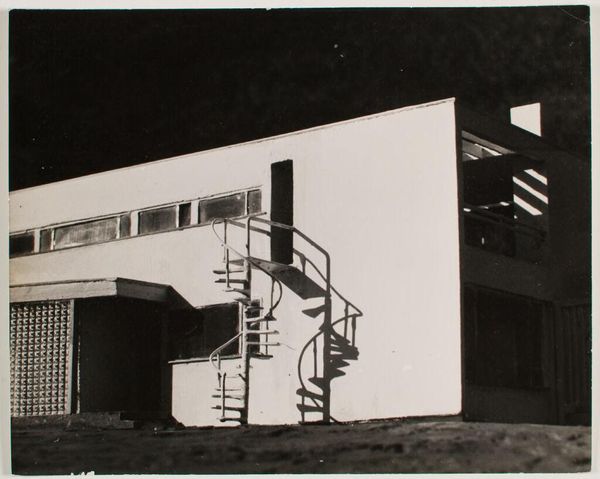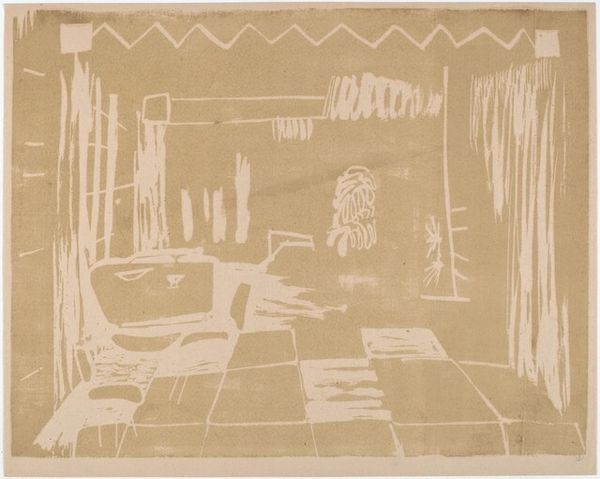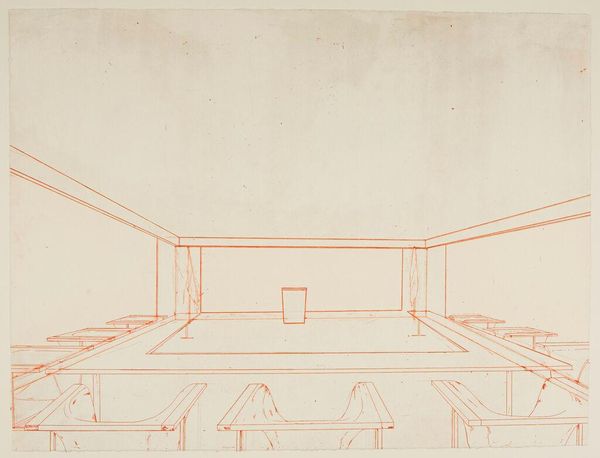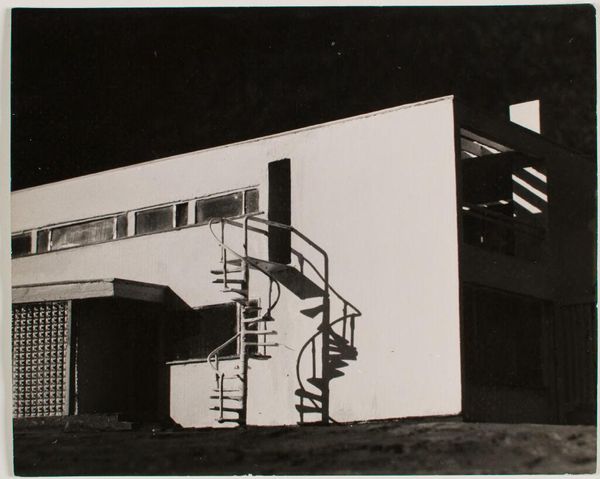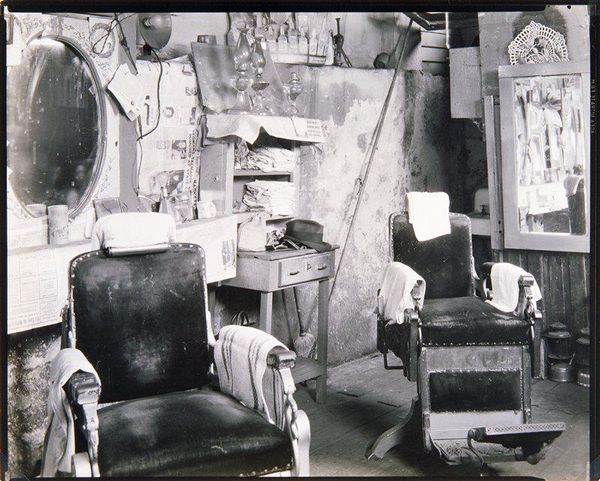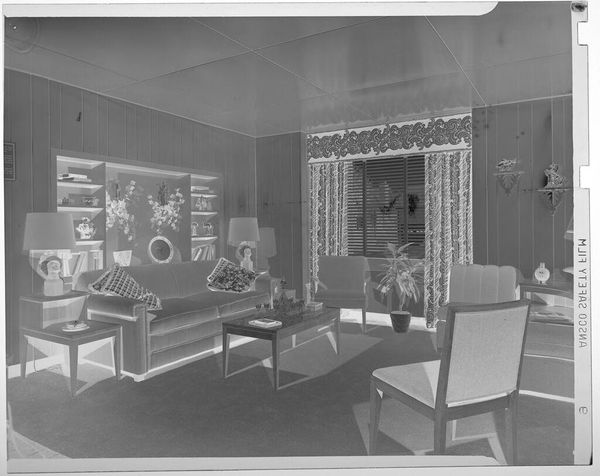
Dimensions: image: 380 x 555 mm
Copyright: © Louise Lawler, courtesy of Metro Pictures, NY | CC-BY-NC-ND 4.0 DEED, Photo: Tate
Curator: This is Louise Lawler's photograph, "March 25, 1991," currently held in the Tate Collections. Editor: Stark. The grayscale palette and strong geometric forms create a very detached, almost sterile feeling. Curator: Lawler often photographed artworks in unconventional contexts, critiquing the art market and the roles of institutions in shaping value. Here, the unpacking crates holding Roy Lichtenstein’s artwork emphasize commodification. Editor: Note the subtle reflections on the floor—a brilliant formal choice. They echo and subtly distort the cartoonish lines of the Lichtenstein, adding a layer of visual complexity that contrasts with its flat, graphic style. Curator: Exactly. It makes us consider how we consume art, both visually and economically. What is being valued here—the Pop Art icon, or its investment potential? Editor: Ultimately, it is the tensions between the photograph's realism and the two-dimensional Lichtenstein interior that stay with me. Curator: It's a powerful statement about art's place in our culture, prompting viewers to question what we consider worthy of preservation and display.
Comments
Join the conversation
Join millions of artists and users on Artera today and experience the ultimate creative platform.
tate 6 months ago
⋮
March 25, 1991 is a gelatin silver print showing a corner of a gallery space in the Whitney Museum of American Art during the installation of the 1991 Whitney Biennial. In the foreground two packing crates stand on a small sculptor’s trolley. Behind them, a painting of a domestic interior by American Pop artist, Roy Lichtenstein (1923-97), is propped against the wall. A narrow strip of another painting by the same artist is visible on the right side of Lawler’s image. The gallery has a highly polished floor, generating reflections of the paintings and the crates that repeat and intensify the imagery. Other installation detritus, such as the strips of foam that protect the edges of the paintings from the floor, is visible under the paintings and lying on the floor to the left of the packing cases. Lichtenstein’s painting, Interior with African Mask, 1991, dominates Lawler’s photograph. It shows a room in an affluent home in which modernist furniture is offset by vases of flowers and art objects of various sorts, including an African mask standing on shelves behind an elongated seat. In Lawler’s composition, the mask appears to be facing towards the wooden crates, setting up a play on the notion of importation (packing crates and exotic objects), materials (both are made of wood), value (artworks in museums and exotic objects in the home), ethnicity (white American artists showing in an American museum and African art in an American home) and geometric containment (the mask stands inside a rectangular space in the shelves that mirrors the rectangular volume enclosed by the crates).
